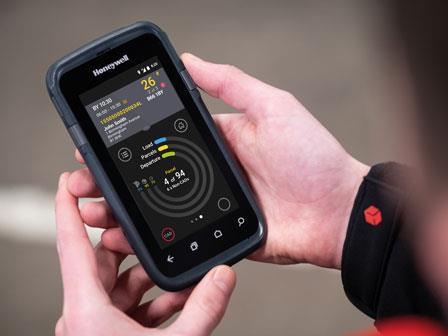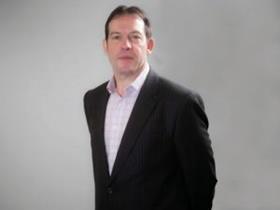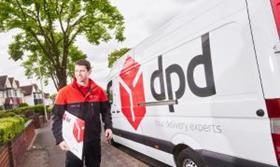
By 2018, DPD’s 65-strong depot network was stretched to its limits following rapid growth over the previous seven years.
“With volumes up around 10% per year, we were facing a capacity challenge,” says DPD group marketing director Tim Jones. “We promise our customers a premium service for 52 weeks of the year, so it’s an important issue if service falls below their expectations. When we are successfully meeting service levels through a super-efficient operation, everyone wins – the customer who pays our wages is happy, the consumer gets their parcel on time, the driver is productive, our carbon emissions are minimised and DPD is keeping its brand promise.”
While DPD had been rapidly expanding sorting capacity at its hubs in Oldbury, demand for its services had grown even faster, outstripping even DPD’s ambitious growth plans.
“The depot and hub network grow in tandem,” explains Jones. “Pressure was growing mainly because demand for our services grew more quickly than expected, as we took a bigger and bigger share of the booming e-commerce market.
“Our volumes doubled between 2010 and 2017, so the challenge was around making sure that our back-office processes and the tech we use to support our drivers were keeping pace with that growth.”

When the £150m, 277,000sq ft Hub 5 at Hinckley, pictured, is complete in 2022, its 3km of conveyors will handle 72,000 parcels per hour and together with the 117,000sq ft Hub 4 (which opened in Hinckley in 2015) it will mean DPD has the UK’s two biggest parcels superhubs.
Avoiding bottlenecks
While the depot network had grown from 56 in 2018 to 65 in 2019, DPD wanted a more efficient process for allocating parcels to routes which only allowed drivers to leave depots once all inbound trailers had been tipped to ensure all parcels had been loaded on designated routes. This sometimes caused bottlenecks as vans attempted to leave depots at the same time during rush-hour traffic, affecting service performance and reducing the earning potential of 7,000 drivers paid on a ‘per-stop’ basis.
DPD had to act quickly, but recognised that building more depots to keep up with customer demand was not the answer, not least for carbon footprint reasons.
“Part of our updated mission statement makes a promise to be the ‘UK’s leader in sustainable delivery’, so our first priority is to ensure that we maximise the productivity of existing assets before investing in more capacity,” says Jones. “For example, during peak, our hubs start operating several hours earlier than normal, around mid-afternoon, so that we can get a head-start on the sortation process and get parcels back out to the delivery depots.
“Likewise, operating waves at our depots means we can now stagger the times at which drivers arrive for work in the morning. This minimises bottlenecks and increases productivity – in short, the goal is to use floor space as intelligently as possible, before building new sites.
“But of course we are still increasing our depot network – in fact we’ve added an extra 15 since the start of the pandemic – and it can make sense from a CO2 point of view to add another depot where there is enough volume, because it reduces stem mileage and emissions.”

So in 2018, DPDgroup CEO Dwain McDonald, pictured left with MT editor Steve Hobson, challenged the company to develop a scaleable technological solution that would sweat DPD’s existing assets, increase driver productivity, pay and retention, and return service quality to – at the very least – a 98.5% rating. No mean feat, especially as the solution also had to reduce costs and CO2 emissions.
With these goals in mind, Project Quantum was launched in early 2018, with a team of 40 experts drawn from divisions across the business – including 200 of DPD’s most experienced delivery drivers, there to ensure the solution would work out in the real world. Was that a brave move?
“The idea of including drivers was agreed at board level, where we have more than one director who started with us as a driver!” says Jones. “We don’t see it as brave – it was the smartest thing to do. And the benefits are clear: when you ask the people at the coalface what would make their life easier and then you give it to them, they feel valued and give you more in return.
“It’s a bit like our Design Space approach, a forum on our app where consumers share ideas that help us improve the doorstep experience – often it’s the people at the coalface who come up with the best innovations. So we are big believers in ‘co-creating’ with the people at the sharp end.”
Pooling skills
Working together, the team pooled their skills and knowledge to develop new route-optimisation software to speed up the parcel-loading process, and a more efficient and accurate routing system, all running on brand-new Honeywell handheld devices, which replaced the drivers’ older, less reliable mobile devices.

“The Honeywell CT60 was the best fit for what we wanted to achieve,” explains Jones, pictured. “It’s been a great device – rugged but also user-friendly and with super-fast processing. Some of our drivers take their device home and can start downloading their route in the morning before arriving at the depot, so they know in advance how many stops they’ll be making and get an idea of their route. A large percentage of the £9.3m investment in the project was on this hardware.”
Drivers on the team played a key role at this stage in refining the postcode system, which they said needed to provide more precise delivery points, especially in shopping centres, hospitals and universities.
The result was a much more refined algorithm, which not only gets the driver to the exact delivery point via the most efficient route possible, but also stores that delivery’s precise latitude-longitude data so it can be used for the next delivery.
“We looked at various suppliers to helps us generate postcode suffixes,” says Jones. “We decided to partner with AFD, whose lat-long methodology was the best fit for our operation and for the way our IT systems interface with our customers.”
Quantum’s benefits are clear. DPD’s 12,000 drivers are now out on the road around 45 minutes earlier than previously, with the company seeing a 56% rise in the number of parcels loaded per day.
Drivers are also routed more efficiently to customers’ addresses, resulting in a 10.4% rise in driver productivity since launch.
In addition, CO2 emissions per parcel have fallen by 3.4%, while right-first-time deliveries have risen by four million per year.
The judges were certainly impressed, praising DPD for an outstanding performance that had successfully engaged staff to deliver an innovative solution, boosting driver productivity and customer service levels, while also cutting costs and protecting profit margins.
Sharing knowledge helps everyone
As well as using more accurate location and direction software to get drivers right to the doorstep, Project Quantum also enabled DPD’s drivers to update the system with more detailed data based on their experience of a route.
“Our people know that delivering more than a million parcels per day is a team effort – that’s why flexibility is part of our DNA,” says Jones. “Obviously with any operational change there can be resistance at first, but as long as you explain the benefits properly and train people to use the new kit, you get strong buy-in, especially when your people have helped design it in the first place!”

Rather than experienced drivers seeing this shared knowledge as a risk that they could be replaced with less knowledgeable people, they understand that better service levels benefit the whole business.
“Pooled knowledge means that a franchise driver who is away on holiday or is shielding due to Covid knows that their customers will still be looked after by the person standing in for them,” Jones argues. “We don’t often recruit drivers to replace other drivers – unless they’ve been promoted or left the company. In fact the pandemic has created new vacancies and we now have 12,000 delivery drivers , with the new ones able to get up to speed much more quickly than before – precisely because the new tech gives them that crucial local knowledge.”










